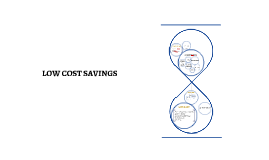Cost Savings
Transcript: Introduction to Cost Savings Cost Savings Importance of Cost Management Definition of Cost Savings Effective cost management enables businesses to maintain financial health and increase competitive advantage. By controlling costs, companies can allocate resources more efficiently, directly impacting their ability to drive sales growth. Cost savings refer to the reduction of expenses that contributes to increased profit margins. Businesses can achieve this through various strategies including process improvements, optimization of resources, and smarter purchasing decisions. Introduction to Cost Savings Understanding cost savings is vital for businesses aiming to enhance profitability. Effective cost management correlates significantly with achieving ambitious sales targets, including a remarkable 450% sales increase. Overview of Sales Objectives Sales objectives define specific performance targets that guide a company’s strategies towards revenue growth. Setting ambitious sales goals, such as a 450% increase, requires a comprehensive understanding of cost savings and market dynamics. Targeting Sales Growth Achieving a 450% Increase in Sales in Just 3 Months Setting Realistic Goals Identifying Key Opportunities Setting realistic, measurable goals is vital for achieving a 450% sales increase. Clear performance indicators and a timeline for achievements ensure that teams remain focused and motivated toward delivering results. Key opportunities for sales growth include leveraging digital marketing channels and enhancing product offerings based on consumer feedback. Tapping into emerging trends can also create avenues for attracting a broader customer base. Strategies for Achieving 450% Increase Current Sales Analysis The current sales figures demonstrate an opportunity for significant growth, especially with a target of 450% increase in three months. Understanding seasonal trends and customer demographics will aid in enhancing sales strategies effectively. Targeting Sales Growth Analyzing current sales data reveals critical insights for strategic improvement. By recognizing existing market conditions and consumer behaviors, businesses can align their objectives to achieve substantial sales increases. Marketing Initiatives Targeted marketing campaigns utilizing social media and email have been shown to significantly increase engagement rates. For instance, personalized offers based on customer behavior can lead to a 25% higher conversion rate, highlighting the importance of data-driven marketing strategies. Enhancing Customer Experience Implementing user-friendly platforms and streamlined communication processes can elevate the overall customer experience. Companies that prioritize customer satisfaction often see a direct correlation with sales growth, with satisfied customers being 60% more likely to return. Strategies for Achieving 450% Increase Streamlining Operations Implementing strategic marketing initiatives, enhancing customer experience, and streamlining operations are crucial for achieving a 450% increase in sales in a short time frame. These strategies are designed to boost efficiency and drive significant sales growth in under three months. Efficient operations minimize costs and maximize profits. Automation of repetitive tasks can lead to an increased output by up to 40%, allowing companies to focus resources on growth strategies and ultimately driving sales increases. Measuring Success Adjusting Strategies Based on Performance Data-driven strategies should be adjusted in response to sales performance metrics. If certain initiatives show underperformance, pivoting focus towards more effective strategies enhances overall sales growth and aligns efforts towards the 450% target. Monitoring Progress Regularly reviewing sales data through dashboards aids in monitoring progress towards the 450% sales goal. Utilizing tools like CRM systems and analytics platforms enhances real-time insight into customer interactions and sales performance. Measuring Success Metrics for Sales Growth Effective measurement of success not only quantifies sales growth but also informs strategic adjustments to optimize performance. Establishing relevant metrics ensures that the journey towards achieving a 450% increase in sales is both targeted and actionable. Key performance indicators (KPIs) such as revenue per sale, customer acquisition costs, and conversion rates are critical for quantifying sales growth. Tracking these metrics facilitates a deeper understanding of how marketing strategies impact revenue generation.

















